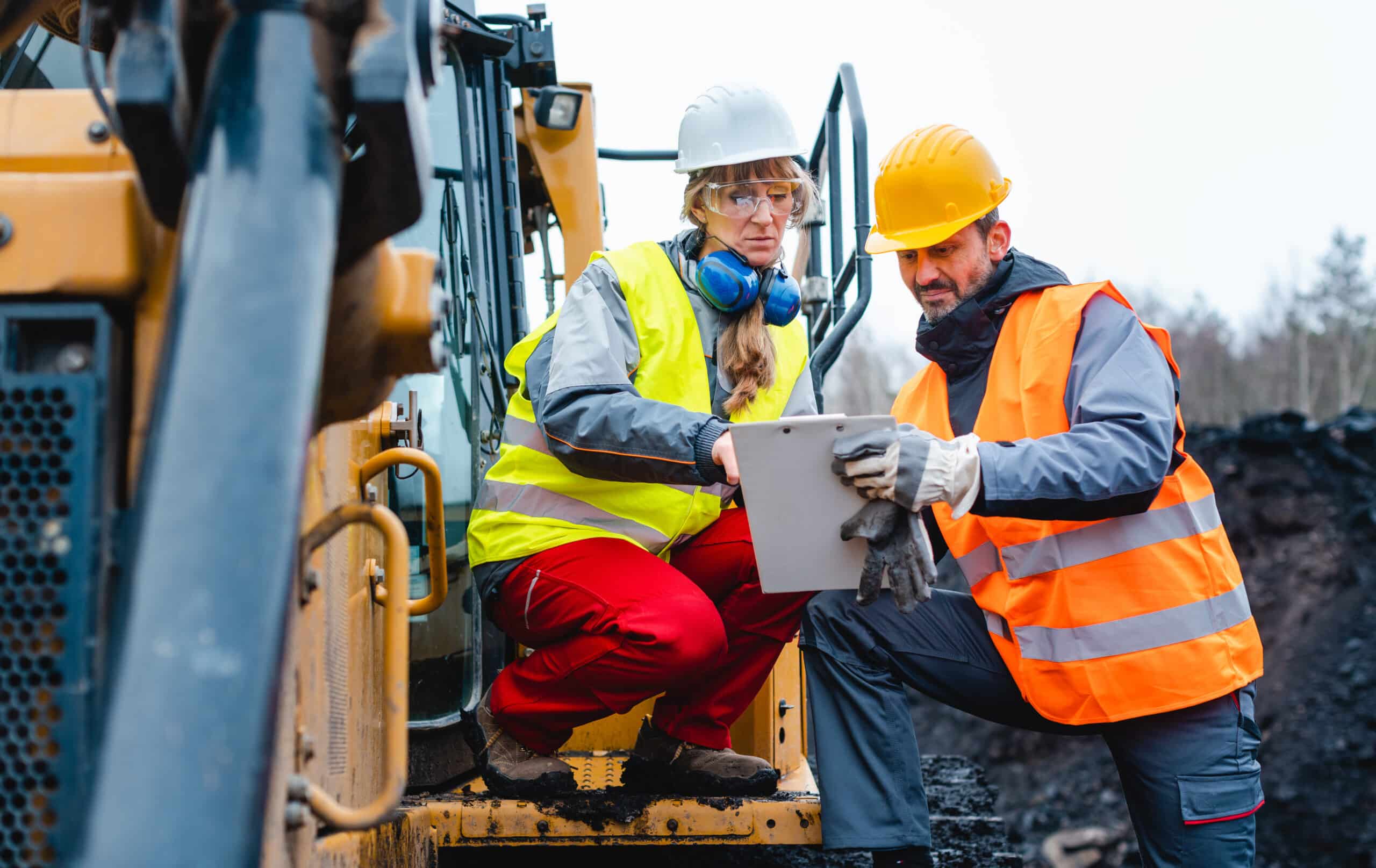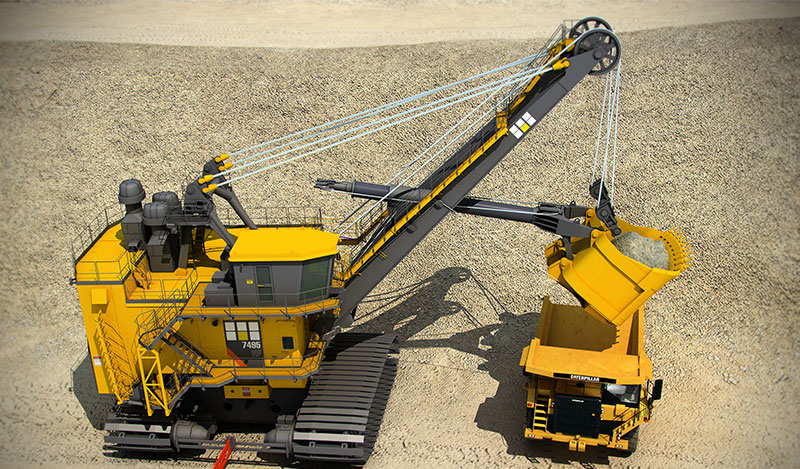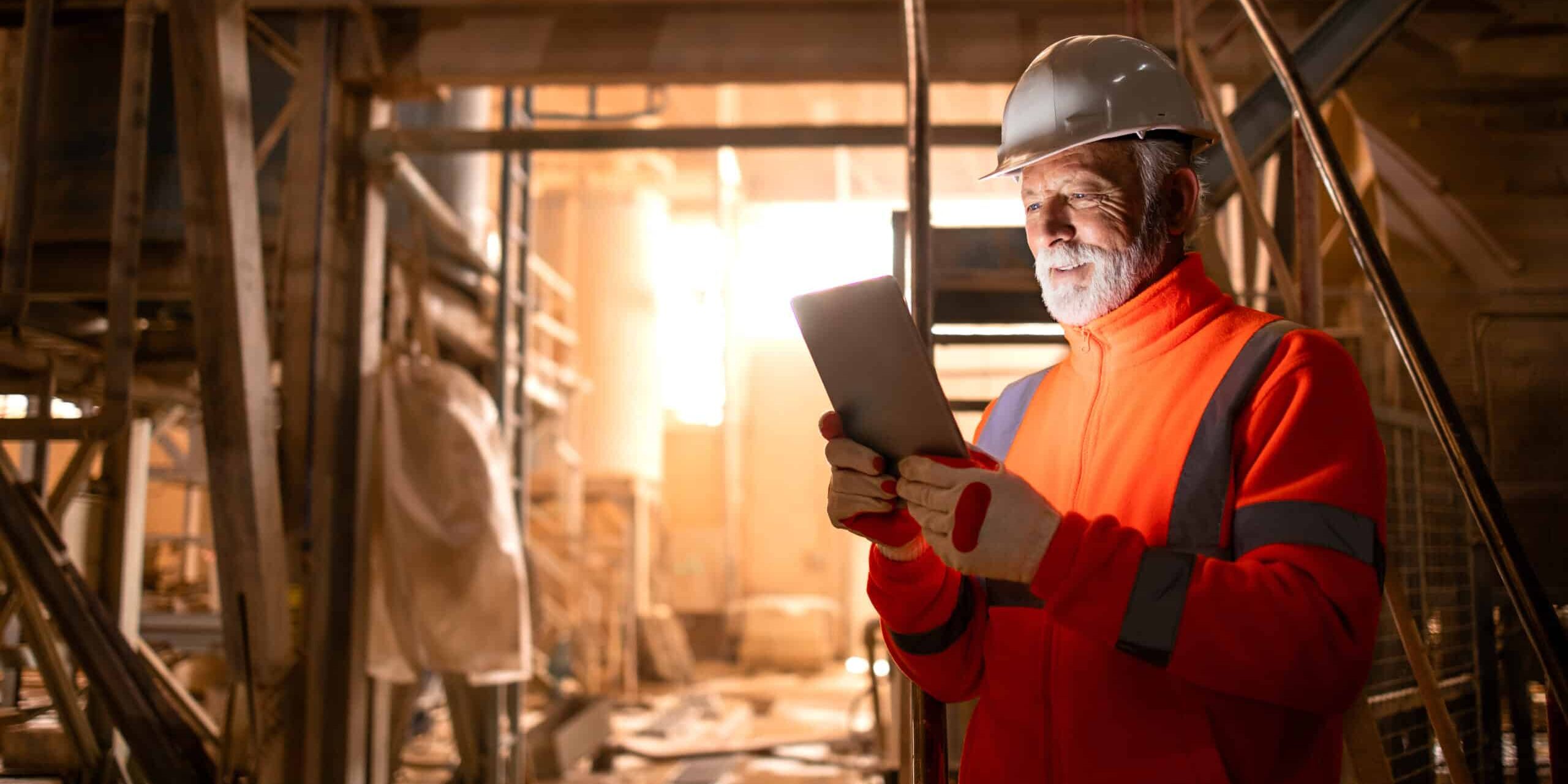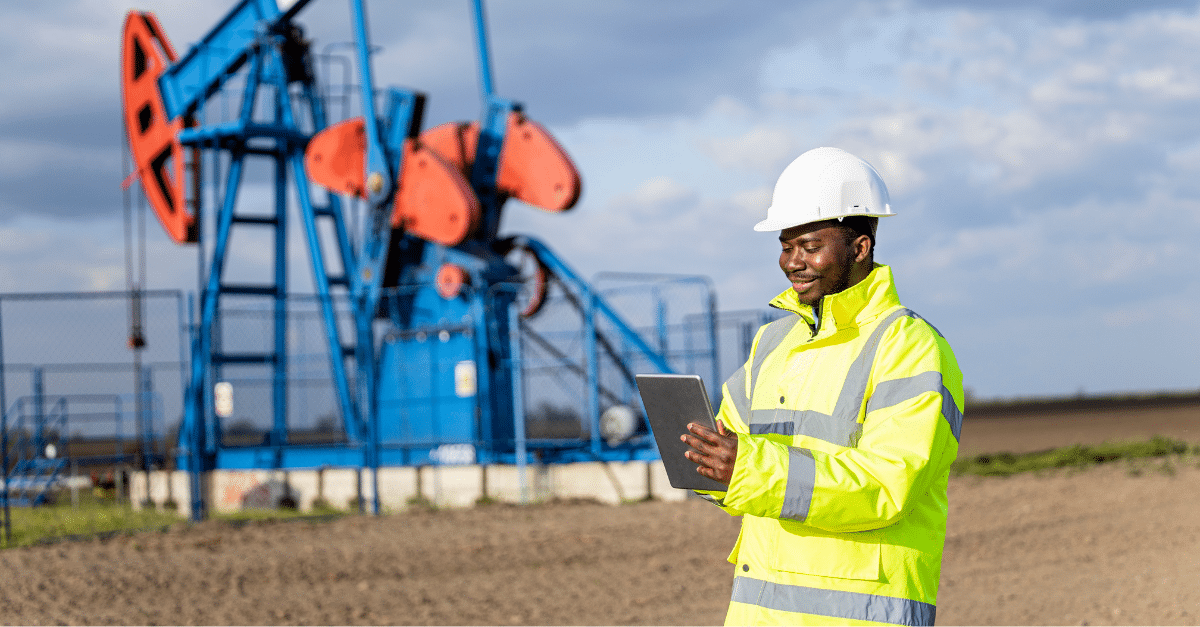March 22, 2024 7 min read

Selecting the Right Safety in Mining Courses
Industry:
Solution:

Mining is one of the most dangerous industries in the world, making safety training a necessity. Ensuring your workforce is well-versed in the latest safety protocols isn’t just a legal requirement but a critical part of creating a safe working environment and retaining your valuable staff. In this blog, we’ll review what makes for a good safety in mining course, why they’re so important, and a few training options you can choose from.
What are the Biggest Safety Concerns in Mines?
Mining is full of potential hazards that miners must be aware of and trained in to stay safe. From surface mines to underground operations, all types of mining pose risks. Here are the top mining safety concerns to be aware of.
Safety Concerns in Surface Mines
- Ground Stability. The unpredictable nature of ground stability is a challenging concern in surface mines. Rockfalls, collapses, and subsidence present significant risks to both miners and mining operations. Mitigating this hazard involves a deep understanding of site geology, robust ground control measures, and comprehensive training to identify and respond to instability threats.
- Heavy Machinery Operation. The operation of heavy machinery can pose risks to those operating the equipment and anyone in the vicinity. Mishandling or equipment malfunctions can lead to severe injuries or fatalities. Ensuring proper training on equipment operation, maintenance protocols, and implementing safety guidelines is crucial in mitigating these dangers.
- Hazardous Material Exposure. Surface miners often face potential exposure to harmful substances such as dust, chemicals, and gases. Respiratory issues, skin ailments, and long-term health impacts can result from inadequate protection and training. Rigorous safety protocols, proper ventilation systems, and education on the hazards of specific substances are essential.
Safety Concerns in Underground Mines
- Air Quality. Gases in mines increase the risk of explosions, but there are numerous other air contaminants in mines (e.g., dust, fumes) that can have serious health effects without proper ventilation and personal protective equipment (PPE).
- Roof Collapses. The stability of mine ceilings is a constant concern. Regular inspections, preventive measures, and emergency response training are vital components in safeguarding miners against these unpredictable events.
- Underground Fires. Fires in underground mines can escalate rapidly, posing severe threats to people and equipment. Robust preventive measures, including effective fire suppression systems, thorough emergency response planning, and ongoing training, are crucial in minimizing the risks associated with underground fires.
What Are the Safety Measures in Mining?
Despite the risks, there are many safety measures organizations can take to improve the safety of their mining operations. All these safety measures should be included in your mining safety courses, but we’ll discuss that more shortly.
- Properly train your workforce. Thoroughly training new and experienced miners to meet MSHA requirements is one of the best ways to improve safety in the mining industry. This training should be comprehensive, covering everything from proper equipment operation to hazard recognition and emergency response. Keep reading to get our suggestions for what makes a great safety in mining course.
- Regular safety audits and inspections. Conducting routine safety audits and inspections helps you catch potential hazards. This proactive approach enables the identification and mitigation of risks before they escalate, contributing to a continuously improving safety culture. The right EHS software can make a big difference in streamlining and improving this process.
- Personal Protective Equipment (PPE). Mandating the use of appropriate PPE, tailored to specific mining tasks, is a fundamental safety measure. This includes items such as helmets, gloves, respiratory protection, and high-visibility clothing, providing a critical layer of defense against various occupational hazards.
- Invest in safety technology. From ground stability technology to dust control and ventilation systems, there are many ways to mitigate some of the top hazards in mining.
- Emergency response plans. Developing comprehensive emergency evacuation plans tailored to the unique challenges of your mining operation is essential. These plans include designated escape routes, emergency exits, and communication protocols to ensure swift and organized responses in crisis situations.
What to Look for in a Safety in Mining Course
Because safety is so important, there can be a lot of safety courses available for the mining industry. Picking the right ones that will ensure you stay compliant and that your employees stay safe can be challenging.
Beyond the course content itself, considerations extend to the provider’s reputation, relevance to mining environments, and the incorporation of modern technologies. Here are key aspects to scrutinize as you assess safety in mining courses:
Safety in Mining Course Topics
Your mining safety curriculum should cover a few important topics and be in compliance with MSHA Part 46 training requirements.
- Introduction to the Mine Environment. New miners should be introduced to mining and the environment as part of their initial training.
- Emergency Procedures. Courses should provide training on emergency procedures.
- First Aid and Respirators. To mitigate risk to health and safety, mining safety courses should cover first aid and how to use respirators.
- Hazard Recognition and Avoidance. Safety courses focusing on spotting and avoiding mining hazards are a key preventative step that should be covered in your training plan.
- Health and Safety Aspects of Mining Tasks. It’s important to train miners on the health and safety components of their job.
- Worker Rights and Reporting. Because mining is a dangerous industry, it’s important to train miners of their rights.
MSHA Compliance Training Library
Learn how MSHA and other mining-related training can help your organization improve compliance and reduce safety incidents
View Library
What to Look for in a Mining Safety Course Provider
- Compliance with Industry Regulations. A reputable mining eLearning provider should align with and cover the latest industry regulations and MSHA standards. Ensure that the course content is regularly updated to reflect any changes in safety guidelines and compliance requirements relevant to mining operations.
- Tailored to Mining. General HSE courses are important but not enough on their own. Look for providers who offer courses specifically designed for the mining industry.
- Evaluation Features. Assess the course’s evaluation and certification process. A thorough competency assessment ensures that miners have grasped the essential safety concepts. Look for courses that provide recognized certifications upon completion, contributing to the continuous professional development of your workforce.
- Accessibility. Whether through online modules, mobile compatibility, or blended learning options, a learning management system (LMS) that accommodates diverse learning preferences and schedules ensures higher engagement and participation.
By carefully evaluating safety courses based on these criteria, you empower your mining workforce with the knowledge and skills necessary to navigate the complex safety landscape inherent in the mining industry.
Vector Solutions’ Safety in Mining Courses
At Vector Solutions, we offer an abundant library of online health and safety courses that are ideal for customers in high-risk industries. But we also offer MSHA-compliant training, including MSHA Part 46.
Below is just a sampling of course content on key mining safety topics:
Hazards in Mining
- Chemical Hazards at a Mine: This course offers information on how to protect miners and mining equipment from hazardous chemicals. It also reviews what is involved in an Emergency Spill Response plan.
- Environmental Hazards at a Mine: This course focuses on environmental hazards including weather conditions, airborne hazards, and unstable ground conditions.
- Equipment Hazards at a Mine: This course reviews the hazards associated with mining equipment and how to avoid such risks.
- Physical Hazards at a Mine: Physical hazards can be anything from high noise levels to electricity, explosions, and fire. This course covers what these hazards are and how to avoid them.
- Hazard Communication for Mining: This HazCom course outlines chemical labeling and documentation requirements to help mine operators reduce illness and injury.
Mining Safety Courses
- Safety Management: Job Hazard Analysis: This course shows how to use a Job Hazard Analysis (JHA) to prevent injuries and fatalities.
- Emergency Procedures at a Mine: This course provides common emergencies at mines as well as typical communication methods and evacuation procedures.
Want to see more of our mining safety courses? Request a demo today.









